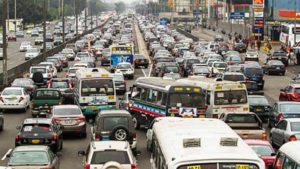
Challenge
In early 2000, urban transport in Lima had become unsustainable and required a major restructuring. Congestion, average travel times, and public transport expenditures were high. The system faced rising traffic accidents and high operating costs. Because of these inefficiencies, gas consumption was also high. This situation, combined with the considerably high emissions of air pollutants by an obsolete fleet, constituted an ongoing health threat and a major source of greenhouse gas. The quality of the public transport services was low. Access to buses for mobility-constrained people was limited, at best. Personal safety and security were a major concern, especially for women. This worsening and chaotic quality of urban public transport services was also the result of a weak institutional framework, poor governance, and a lack of capacity in sustainable transport.
Solution
The main instrument used to address the urban transport issues in Lima was a Bank-funded investment loan, which financed the infrastructure for the first bus rapid transit corridor, including corridor paving, stations, terminals, bus depots, complementary infrastructure, sidewalks, and bikeways. The loan also financed institutional strengthening for the public transport sector. The loan was complemented by this GEF project, a number of grants (which funded complementary studies), and the Bank’s technical advice and support. The GEF project financed bicycle infrastructure and promotion activities to complement the loan’s non-motorized transport activities. It also financed capacity building in sustainable urban transport, an urban transport study for Lima and Callao, and replication activities in other parts of the country.
Results
Through this GEF grant, Lima and Callao established a foundation for better, cleaner, more efficient, and safer urban transport and a consequent reduction in greenhouse gas emissions. The main results of this project are:
- Blueprint for an integrated public transport system in Lima, which is under consideration for at least partial implementation.
- A 3.6 percent increase in bicycle trips in Lima and Callao between 2004 and 2009–2010.
- Rehabilitation of 33.2 km of bikeway and 19.4 km of bikeway construction between 2004 and 2010.
- Construction of 668 bicycle parking facilities with a total of 2,573 spaces in 35 municipalities.
- An operational bus scrapping scheme, which, by November 2012 had destroyed 790 old and polluting buses. This corresponds to annual greenhouse gas reductions of about 26,500 tons.
- A manual, promotional material, and the necessary knowhow to carry out bicycle use promotion campaigns and activities.
- Greater awareness of the importance of sustainable transport.
Project Cost Description
A GEF grant of US$7.4 million and a Bank loan of US$45 million contributed to improving urban transport in Lima and Callao, including the first bus rapid transit corridor in Lima. Bank support included several small grants to carry out complementary studies and an ongoing policy dialogue on sustainable urban transport.